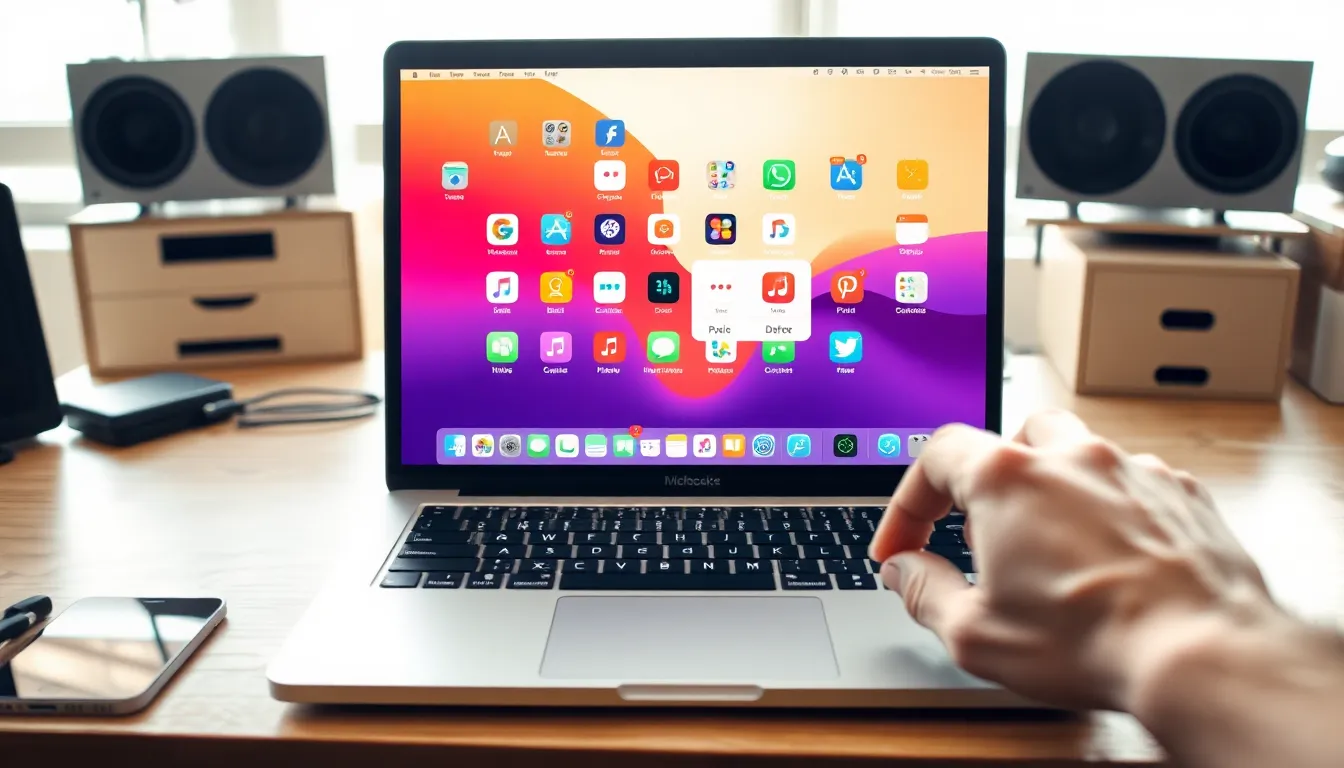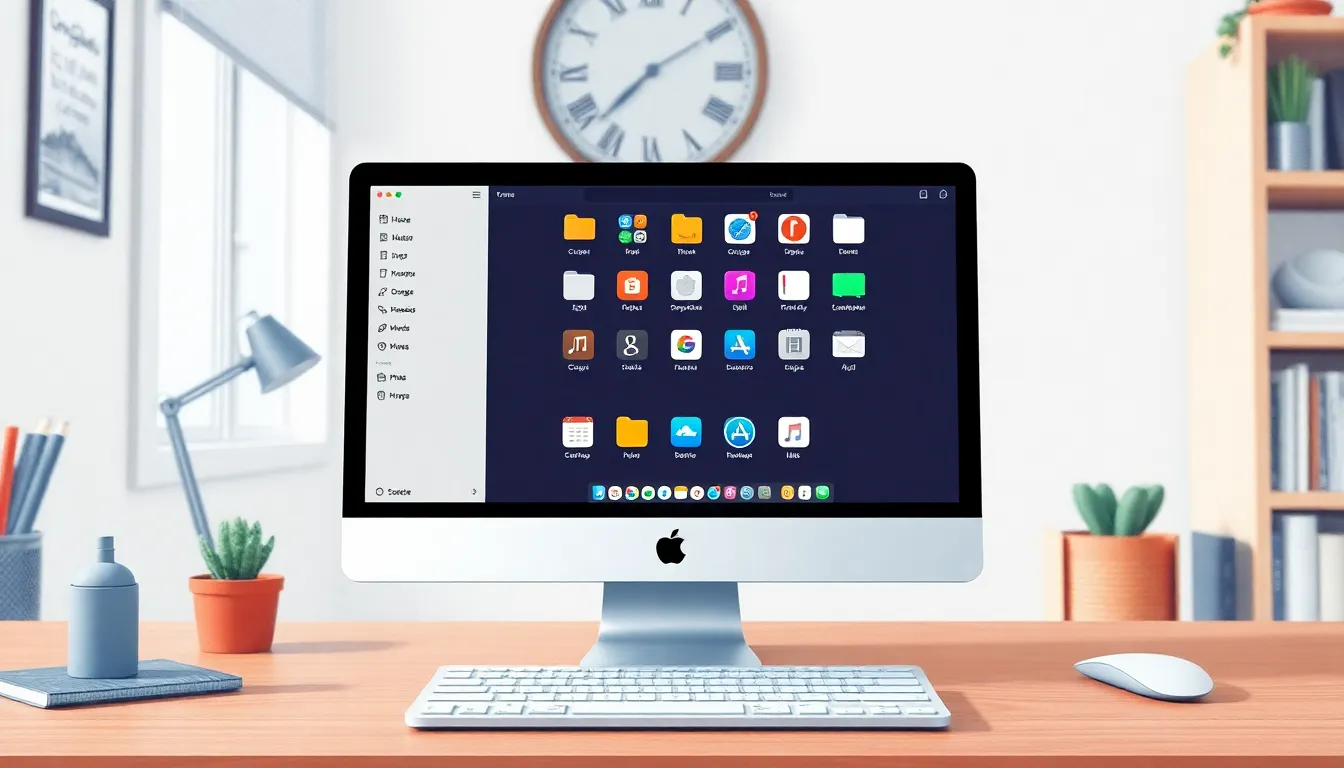Is your MacBook feeling a bit cluttered? Like that one drawer in your kitchen filled with expired coupons and random takeout menus, your apps can pile up fast. Whether it’s that game you played once or the photo editing software you swore you’d master, it’s time to make some space and declutter.
Table of Contents
ToggleUnderstanding MacBook Applications
MacBook applications, or apps, serve various functions, including productivity, entertainment, and system management. These programs can be found in the Applications folder, which functions as a central hub for software access. Users install both native apps, preloaded on the device, and third-party applications from the App Store or external sources.
Expanding storage space might require removing unused applications. Locating these apps is essential; an effective way to identify them involves checking the Applications folder for any software that hasn’t been opened in weeks or months. Unused games, tools, or utilities create clutter, making it difficult to navigate and utilize the MacBook efficiently.
Uninstalling apps takes just a few steps. Dragging the app to the Trash is one method. Right-clicking on the app icon and selecting “Move to Trash” is another straightforward option. Some applications may come with their own uninstaller, providing a more thorough removal process.
Installing yet another app without deleting old ones contributes to not only clutter but also potential performance issues. Frequent updates and background processes from multiple applications lead to slower system speeds. Recognizing this, users benefit from regular maintenance.
In addition, managing applications effectively can optimize overall functionality. Keeping the Applications folder organized aids in quickly locating essential software. Implementing a decluttering routine ensures MacBooks remain efficient, user-friendly, and enjoyable to use.
Methods To Delete Apps On MacBook


Deleting unnecessary apps helps maintain an organized and efficient MacBook. Multiple methods exist for uninstalling applications easily.
Using The Finder
Using Finder offers a straightforward approach to delete apps. Users can open the Applications folder from the Finder sidebar. Dragging an app icon from this location into the Trash effectively removes it. For a more thorough uninstallation, users can right-click on the app and select “Move to Trash.” Don’t forget to empty the Trash afterward to permanently remove the app from the system.
Using Launchpad
Launchpad simplifies app management on a MacBook. Users can access Launchpad by clicking its icon in the Dock or using a multi-touch gesture. Locating the app intended for deletion is easy. Holding the Option key reveals an “X” button on the app icons. Clicking this “X” prompts a confirmation message. Completing this step ensures the app is deleted from the MacBook.
Using The Trash
The Trash serves as a temporary storage for deleted items. Users can drag apps directly into the Trash from the Applications folder or Finder. Afterward, emptying the Trash permanently removes the apps from the system. To avoid mistakenly deleting important files, users should double-check the contents of the Trash before taking this step. Remember that apps deleted in this manner typically free up space immediately.
Best Practices For App Management
Managing apps on a MacBook significantly enhances performance and storage efficiency. Users should regularly review the Applications folder to identify seldom-used apps. Deleting unused applications prevents clutter and streamlines navigation.
Keeping track of app usage helps maintain organization. Keeping a record of applications opened in the last month proves beneficial. Apps neglected for weeks or months often contribute to sluggish performance.
Updating software takes priority when optimizing functionality. It’s essential to uninstall outdated apps before installing new ones. Regularly managing updates reduces background processes that may slow down the system.
Utilizing built-in tools makes the uninstallation process straightforward. Finder offers a simple drag-and-drop method to the Trash. Additionally, Launchpad enables users to easily remove apps by holding the Option key and clicking the “X.”
Emptying the Trash must happen regularly for complete removal. Users might overlook this step, leading to unnecessary storage use. Periodically checking Trash contents can prevent accidental deletions of important files.
Setting reminders to assess app usage every few months keeps the MacBook running smoothly. Scheduling this review creates a proactive approach to app management. Updating organization practices ensures a more enjoyable user experience.
Strategic organization of apps into folders aids quick access. Grouping similar applications makes locating them faster. Prioritizing frequently used apps at the forefront helps streamline daily tasks.
Common Issues When Deleting Apps
Users often encounter difficulties while deleting apps on a MacBook. One common issue arises when apps fail to drag to the Trash. This problem frequently stems from apps that run background processes or require administrative permissions to uninstall. Users may notice some apps don’t include an uninstaller, complicating the removal process.
Incompatibility issues can also occur during the deletion process. For instance, certain applications may rely on additional files or dependencies that complicate uninstallation. Moreover, users sometimes overlook the need to empty the Trash to completely remove the app from the system; remaining files can still occupy valuable storage space.
Confusion often arises around the difference between moving an app to the Trash and uninstalling it entirely. A simple drag-and-drop might leave behind preference files that clutter the system. Users should be aware that persistent leftover files can eventually hinder overall performance.
Another potential issue involves applications that come pre-installed on the MacBook. Users might find these apps grayed out in the Applications folder, preventing straightforward deletion. These applications often require additional steps to remove, leading to frustration among users.
Errors during the deletion process can also arise from software conflicts or system permissions. Users should ensure they have the necessary rights to delete specific applications by checking their MacBook’s security and privacy settings.
Recognizing these common issues allows users to approach app deletion more effectively. Addressing each situation with the right method can significantly enhance system performance and help maintain an organized Applications folder.


